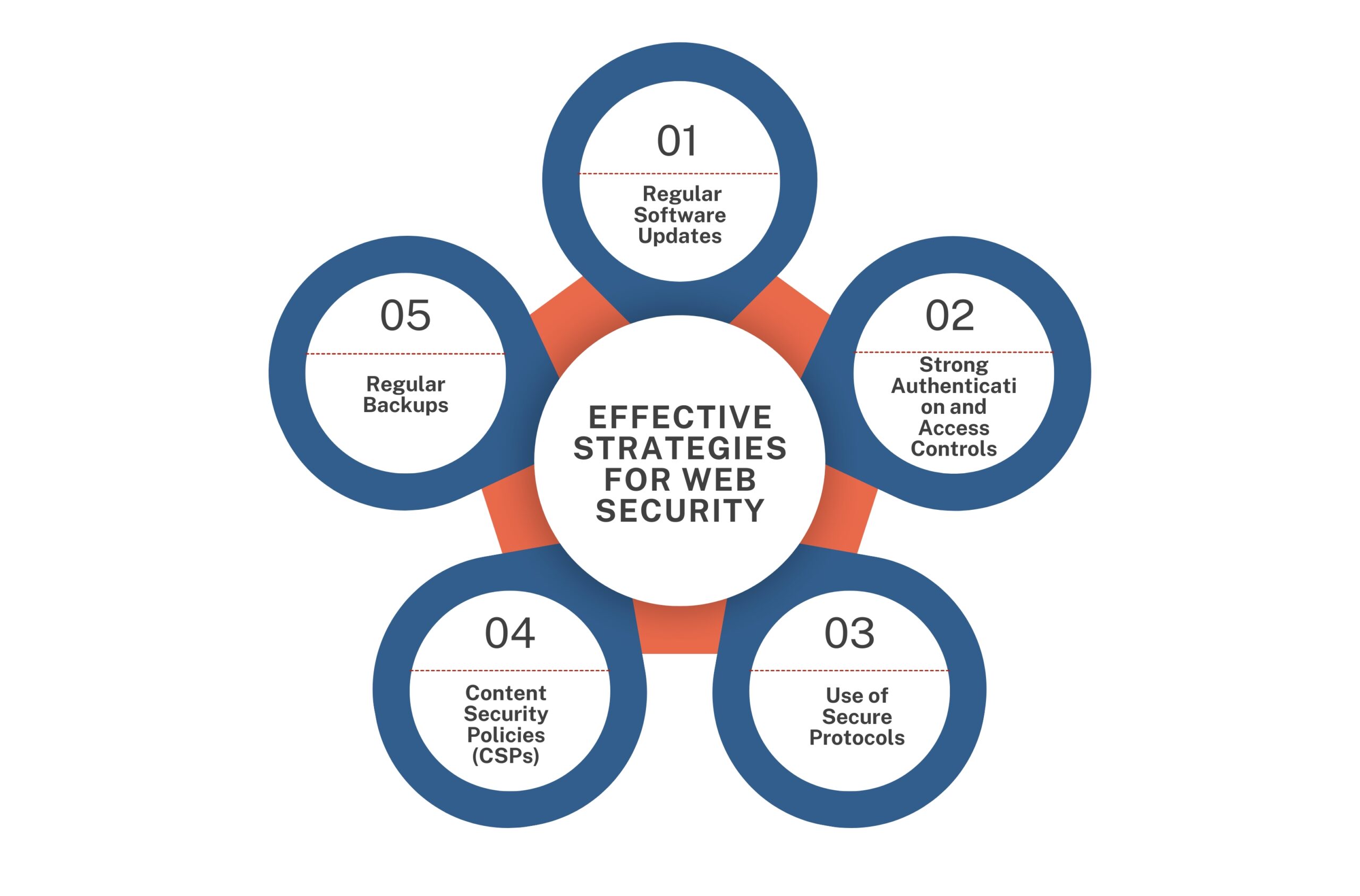Today, when businesses, individuals, and governments rely heavily on the internet, web security has become a foremost concern. With the exponential growth of online activities, the risks of cyber threats and attacks have also intensified. From data breaches to malware infections, the digital landscape is riddled with potential vulnerabilities.
Contents
What is Web Security?
Web security, also known as cybersecurity or web application security, refers to the practice of protecting websites, web applications, and the data type they handle from various threats, attacks, and vulnerabilities that could compromise their integrity, confidentiality, and availability.
As businesses and individuals increasingly rely on the internet for various activities, web security becomes paramount to ensure the safety of sensitive information, prevent unauthorized access, and maintain the overall trustworthiness of online interactions.
Web security encompasses a wide range of techniques, practices, and technologies aimed at identifying, preventing, and mitigating potential risks associated with online platforms.
Understanding Web Threats
Cyber threats come in various forms, each with the potential to wreak havoc on websites and compromise sensitive data. Understanding these threats is the first step toward implementing robust security measures.
- Malware Attacks: Malicious software, or malware, is designed to infiltrate systems, steal information, and disrupt operations. Examples include viruses, worms, Trojans, and ransomware.
- Phishing Attacks: Phishing involves tricking users into revealing sensitive information, such as login credentials or financial details, by posing as a legitimate entity through emails or websites.
- Cross-Site Scripting (XSS): This attack injects malicious scripts into websites, which then execute in the users’ browser. It allows attackers to steal data or perform actions on behalf of users without their consent.
- SQL Injection: In an SQL injection attack, attackers manipulate input fields to inject malicious SQL code into a website’s database, potentially exposing sensitive information.
- Distributed Denial of Service (DDoS): A DDoS attack floods a website with an overwhelming volume of traffic, rendering it unavailable to legitimate users and disrupting operations.
- Cross-Site Request Forgery (CRSF): Attackers trick users into performing unwanted actions without their knowledge, such as making unauthorized transactions or changing settings.
- Brute Force Attacks: In a brute force attack, attackers systematically try different combinations of passwords until they find the correct one, gaining unauthorized access to accounts.
Effective Strategies for Web Security

- Regular Software Updates: Keeping all software, including web server software and content management systems, up to date is crucial. Updates often include security patches that address known vulnerabilities.
- Strong Authentication and Access Controls: Implement multi-factor authentication (MFA) and role-based access controls to ensure that only authorized users can access sensitive areas of a website.
- Use of Secure Protocols: Utilize HTTPS (Hypertext Transfer Protocol Secure) to encrypt data transmitted between users and the website. SSL/TLS certificates validate the authenticity of the website and protect against eavesdropping.
- Security Audits and Vulnerability Scans: Regularly conduct security audits and vulnerability scans to identify weaknesses in your website’s code and infrastructure, allowing you to address them before they are exploited.
- Web Application Firewalls (WAFs): Implement WAFs to filter out malicious traffic and protect against common attacks like XSS and SQL injection. WAFs provide an additional layer of defense beyond traditional firewalls.
- Content Security Policies (CSPs): CSPs define which sources of content are trusted and can be executed on a website. They help prevent XSS attacks by limiting the sources of executable scripts.
- Regular Backups: Perform regular backups of your website’s data and files. This ensures that, in the event of an attack or data loss, you can restore your website to a previous state.
- User Input Validation: Validate and sanitize all user input to prevent malicious code from being injected into your website’s forms and fields.
- Employee Training: Educate your staff about security best practices, including recognizing phishing emails and avoiding risky online behavior.
- Incident Response Plan: Develop a comprehensive incident response plan outlining the steps to take in case of a security breach. This minimizes damage and helps you recover quickly.
- Third-Party Integrations: Be cautious when integrating third-party scripts and plugins. Only use reputable sources, as malicious code in third-party components can compromise your website.
- Limit Server Privileges: Restrict the privileges of users and applications on your server. This prevents potential attackers from gaining unauthorized access to critical resources.
Conclusion
From small business websites to large e-commerce platforms, no online entity is immune to the threats that lurk in cyberspace. Implementing a comprehensive security strategy that encompasses regular updates, user training, encryption, and proactive monitoring is essential to safeguarding against common threats.
By staying vigilant and proactive, website owners and administrators can mitigate risks, protect sensitive data, and provide users with a safe and secure online experience. Remember, the price of complacency in web security far outweighs the cost of investing in robust protective measures.
Frequently Asked Questions (FAQs)
- What are the best practices for web application security?
Best practices include regular security assessments, patch management, user education, implementing the principle of least privilege, and staying updates in security vulnerabilities.
- Why is web security important?
Web security is crucial to safeguard sensitive data, maintain user trust, and prevent financial losses. It helps protect against cyberattacks and ensures the confidentiality, integrity, and availability of web resources.
- How can I stay updated on the latest web security threats and trends?
To stay informed, follow security blogs, subscribe to security newsletters, participate in web security forums, and consider attending security conferences or webinars.
- Should I use HTTPS for my website?
Yes, HTTPS encrypts data transmitted between the user’s browser and your server, protecting it from eavesdropping and tampering. It also improves search engine ranking and user trust.


